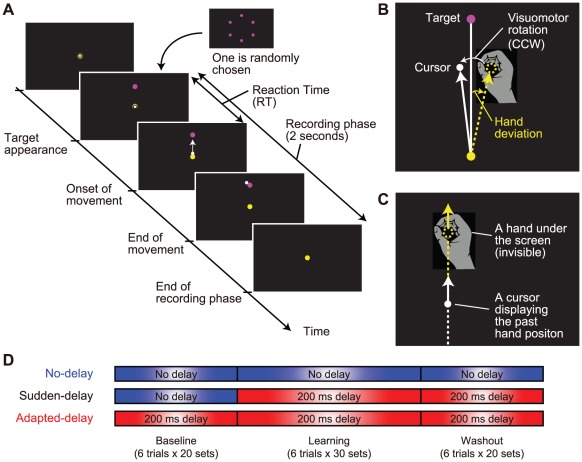Figure 1. Experimental setting.
(A) The sequence of events in a trial. (B) As a visuomotor learning task, we used a visuomotor rotation in which the direction of the cursor was rotated from the direction of the hand around the starting position. (C) In the delayed cursor experiment, the cursor represented the hand position that had occurred 200 ms previously. (D) Three experimental conditions for the cursor display. In the no-delay condition, there was no artificial delay (cyan box) between the hand and cursor throughout the experiment. In the sudden-delay condition, a 200 ms delay was artificially introduced (magenta box) during the learning and washout sessions. In the adapted-delay condition, a 200 ms delay was artificially introduced (magenta box) at the start of the baseline session and maintained throughout the experiment.

